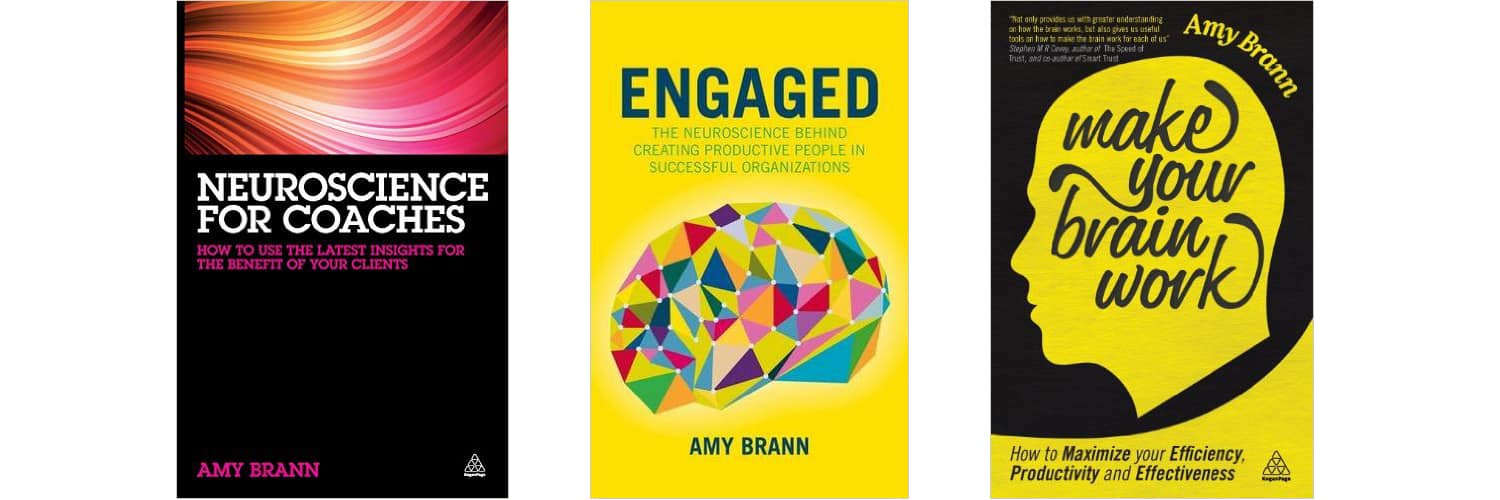Debunking Popular ‘Neuromyths’
Amy Brann is an author and thought leader in the field of human potential, and is fascinated by what the brain can teach us to help transform thinking & performance. As a business coach and consultant, she has participated in over 12,000 hours of coaching with clients globally, and delivers interactive workshops on the application of neuroscience. Her company, Synaptic Potential, pursues research opportunities to advance the practical applications of what neuroscience can bring to businesses. In our guest article this month, Amy puts the spotlight on oversimplifications of neuroscience and how we can avoid them.
Debunking Popular ‘Neuromyths’
Coaches need to be careful when applying neuroscience to their coaching practice. Many oversimplifications of neuroscience have seeped into popular culture and coaching lingo. Plus, more and more dubious ‘neuro’ claims are popping up in consumer marketing. What’s a coach to do? Coaches can avoid falling prey to neuromyths by increasing their neuroscience literacy.
What is a ‘neuromyth’?
Neuromyths are misconceptions or oversimplifications of neuroscience. While neuromyths are often rooted in real scientific findings, they skim the surface, missing the complexity and nuance of neuroscientific information. Science journalists often fall prey to these oversimplifications – and who can blame them? Simple explanations with clear conclusions are attractive. It’s difficult to communicate all of the complexity and nuance inherent in cutting-edge scientific studies, and impossible to fit all of that into a sound bite. Like urban legends, neuromyths spread contagiously. After all, who doesn’t want to know how to work with the human brain?
While some neuromyths are harmless layman misunderstandings of scientific literature, companies often deliberately misrepresent the value of their products or services through exaggerated references to neuroscience-related benefits. Studies investigating teachers’ neuromyth beliefs showed that these incorrect beliefs could have a negative impact on students. It can be extremely difficult for coaches – and almost everyone else – to differentiate neuro fact from neuro fiction as our understanding of the brain is changing every day.
Three Common Neuromyths
Did you know all of these common ideas about our brains are false?
- Myth: People are either ‘right-brain’ or ‘left-right’ dominant. Truth: Everyone uses both the left and right hemispheres of our brain. Scientists in the ‘60’s studied ‘split-brain’ patients who had undergone a severing of the corpus callosum that connects the two hemispheres in order to treat severe and intractable seizures. With the two sides separated, scientists observed some major differences in the ability of each hemisphere to process certain types of information. But this finding has been taken far out of context to spawn the idea that the creatively-inclined are more ‘right-brained’ and the accountants among us are ‘left-brained.’
- Myth: We only use 10% of our brains. Truth: We use all of our brain. Sadly, we can’t become superhuman by unlocking a dormant 90% of our brains. While not all of our neurons are firing at once (that’d be a disaster), we do use widespread networks throughout the brain for everyday functions. Neuroimaging techniques such as MRI show lots of brain areas at work as we perform different functions. Neuroscientists have found that many areas of the brain are active even while resting – a state referred to as the ‘default mode.’
- Myth: The brain is only receptive to certain types of information during critical learning periods. Truth: There’s no age at which all connections are hardwired and learning stops. Research on adult neurogenesis shows that we are not born with all of the neurons we will ever have, and learning does not stop at the age of 3. We continue to grow synaptic connections throughout our entire lifespan. And the belief that listening to classical music makes you smarter? Studies on this ‘Mozart effect’ show that there might be short-term cognitive benefits from this type of stimulation, but so far no studies have linked listening to classical musical to lasting cognitive improvements.
To set the record straight on even more common neuromyths, visit BrainFacts.org’s Neuromyths collection or read this excellent neuromyth review.
Avoiding the Neuromyth Trap:
A good rule of thumb: if it seems too simple to be true, it probably is! Before unequivocally recommending a technique or product to a client (or using it yourself), get your hands dirty and dig into the proof!
© Amy Brann, @Amy_Brann, Synaptic Potential
Amy Brann is also the renowned author of:

